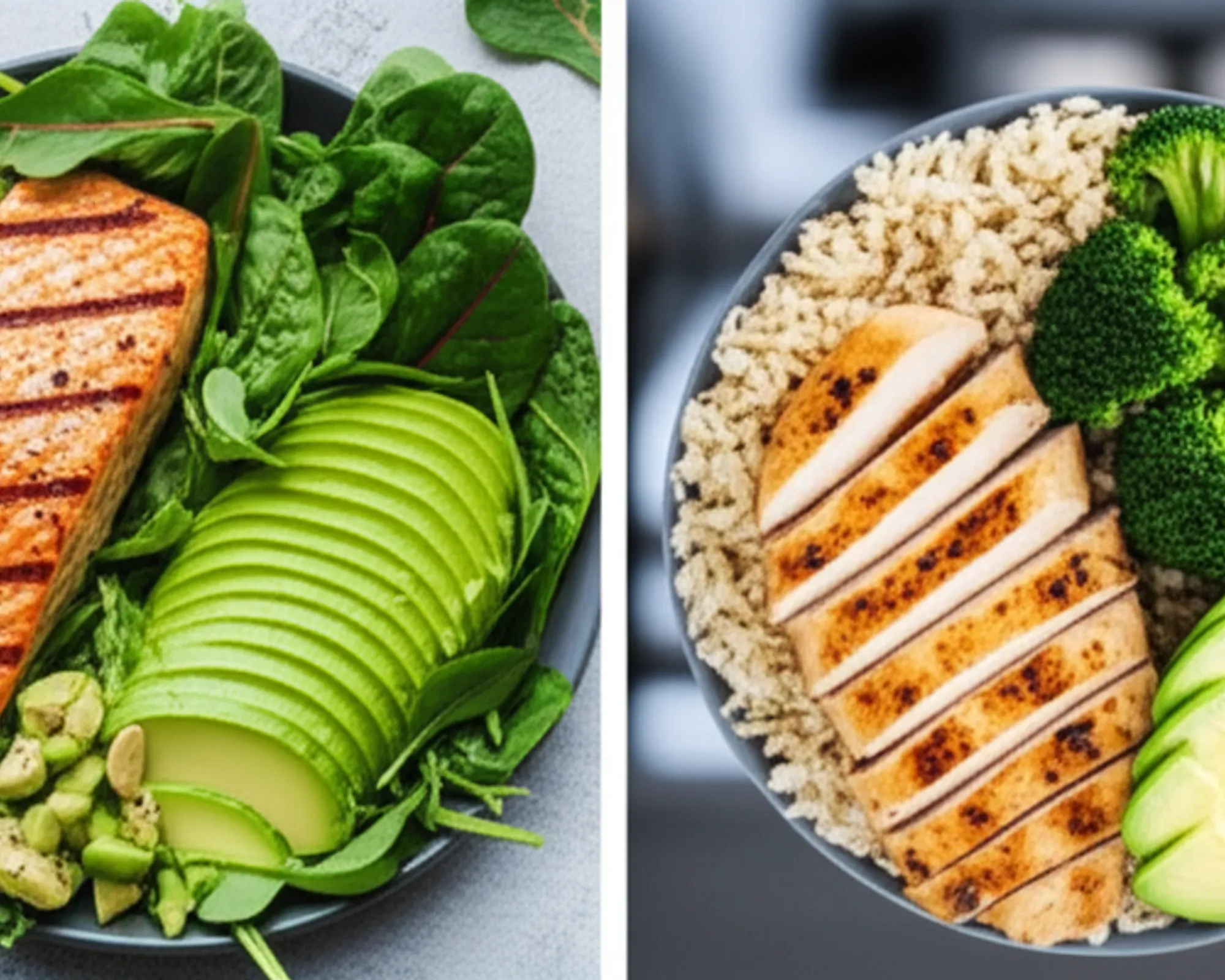Sample Macro Plan for Hypertrophy Training

Achieving significant muscle growth, or hypertrophy, isn't just about lifting heavy weights consistently; it's equally, if not more, about what you fuel your body with. A well-structured macronutrient plan is the cornerstone of any successful hypertrophy training program, providing the energy, building blocks, and recovery support your muscles need to adapt and grow.
Understanding the Pillars: Protein, Carbohydrates, and Fats
Before diving into a sample plan, let's briefly revisit the roles of the three macronutrients:
- Protein: Often called the building block of muscle, protein is crucial for muscle repair and synthesis. When you train, you create microscopic tears in your muscle fibers; protein provides the amino acids necessary to repair these tears, making the muscles grow back stronger and larger.
- Carbohydrates: These are your body's primary source of energy. During intense hypertrophy training, your muscles rely heavily on glycogen (stored carbohydrates) for fuel. Adequate carbohydrate intake ensures you have the energy to perform challenging workouts and helps spare protein from being used for energy.
- Fats: Essential fats play vital roles in hormone production (including testosterone, which is critical for muscle growth), nutrient absorption, and overall health. While not a direct fuel source for high-intensity exercise like carbs, they are indispensable for optimal bodily functions that support muscle building.
Calculating Your Hypertrophy Macros: A Step-by-Step Guide
The first step in creating your macro plan is to determine your daily caloric needs and then adjust for a surplus necessary for growth. Muscle growth is an energy-intensive process, and you need to consume more calories than you burn.
1. Determine Your Total Daily Energy Expenditure (TDEE)
Your TDEE is the total number of calories your body burns in a day, considering your Basal Metabolic Rate (BMR) and your activity level. You can use online calculators to estimate your TDEE, but a common starting point for muscle gain is to aim for a caloric surplus of 200-500 calories above maintenance.
Example: Let's consider a hypothetical individual: a 70kg (154 lbs) male, moderately active (trains 3-5 times/week).
Estimated TDEE (using a general online calculator for a 70kg, 175cm, 30-year-old male, moderately active): approximately 2500-2700 calories.
2. Establish Your Caloric Surplus
For hypertrophy, a modest surplus is key. Too large a surplus, and you risk excessive fat gain. A good starting point is adding 300-500 calories to your TDEE.
For our example individual, let's aim for a 350-calorie surplus:
Target Daily Calories = 2700 (TDEE) + 350 (surplus) = 3050 calories.
3. Calculate Your Macronutrient Breakdown
Here are general guidelines for hypertrophy, which can be adjusted based on individual response:
- Protein: 1.6-2.2 grams per kilogram of body weight (0.7-1 gram per pound). High protein intake is crucial for muscle repair and growth.
- Fats: 0.8-1.2 grams per kilogram of body weight (0.35-0.5 grams per pound). Essential for hormone health and overall well-being.
- Carbohydrates: The remaining calories after calculating protein and fats. Carbs will fuel your workouts and aid recovery.
Applying to Our Example Individual (70kg):
- Protein: Let's use 2.0 g/kg.
70 kg * 2.0 g/kg = 140 grams of protein.
(140 grams * 4 calories/gram) = 560 calories from protein. - Fats: Let's use 1.0 g/kg.
70 kg * 1.0 g/kg = 70 grams of fat.
(70 grams * 9 calories/gram) = 630 calories from fat. - Carbohydrates: Now, calculate the remaining calories for carbs.
Total calories needed: 3050 calories.
Calories from protein and fat: 560 + 630 = 1190 calories.
Calories remaining for carbs: 3050 - 1190 = 1860 calories.
Convert to grams: 1860 calories / 4 calories/gram = 465 grams of carbohydrates.
Sample Daily Macro Plan for our 70kg Male:
- Calories: 3050
- Protein: 140g
- Fats: 70g
- Carbohydrates: 465g
Meal Timing and Distribution
While the total daily intake matters most, strategic meal timing can optimize nutrient utilization:
- Consistent Protein Dosing: Aim to distribute your protein intake fairly evenly across 4-6 meals throughout the day (e.g., 25-35g per meal). This ensures a steady supply of amino acids for muscle protein synthesis.
- Pre-Workout: A meal containing complex carbohydrates and a moderate amount of protein 1-2 hours before training can provide sustained energy and prevent muscle breakdown.
- Post-Workout: Within 1-2 hours after your workout, consume a meal rich in fast-acting carbohydrates and protein. This replenishes glycogen stores and kick-starts muscle repair.
- Before Bed: A slow-digesting protein source (like casein protein or cottage cheese) before bed can provide a sustained release of amino acids overnight, supporting recovery.
Smart Food Choices for Hypertrophy
Hitting your macros is important, but the quality of your food sources also matters. Opt for nutrient-dense, whole foods:
- Protein Sources: Lean meats (chicken breast, turkey, lean beef), fish (salmon, cod, tuna), eggs, dairy (Greek yogurt, cottage cheese), legumes, protein powder (whey, casein, plant-based).
- Carbohydrate Sources: Whole grains (oats, brown rice, quinoa, whole-wheat bread), starchy vegetables (potatoes, sweet potatoes, corn), fruits, legumes.
- Fat Sources: Avocados, nuts (almonds, walnuts), seeds (chia, flax), olive oil, fatty fish (salmon, mackerel).
Tracking, Adjusting, and Consistency
Your macro plan is a starting point, not a rigid, unchanging rule. Your body adapts, and your needs may change.
- Track Progress: Monitor your body weight, strength gains, and how your physique is changing over several weeks. Take progress photos.
- Adjust as Needed:
- If you're gaining weight too quickly (and it looks like mostly fat), slightly reduce your carbohydrate or fat intake (e.g., by 100-200 calories).
- If you're not gaining weight or strength, or feel constantly drained, slightly increase your carbohydrate intake (e.g., by 100-200 calories).
- Maintain protein intake consistently.
- Consistency is Key: No plan works if you don't stick to it. Prepare your meals in advance, keep healthy snacks on hand, and make smart choices when eating out.
The Importance of Hydration and Micronutrients
Don't overlook the importance of water and micronutrients (vitamins and minerals). Adequate hydration is crucial for performance, nutrient transport, and overall cellular function. A diet rich in a variety of fruits and vegetables will ensure you get all the essential micronutrients needed for optimal health and muscle recovery.
Conclusion
A well-thought-out macro plan is an indispensable tool in your hypertrophy journey. By understanding the roles of protein, carbohydrates, and fats, calculating your individual needs, making smart food choices, and consistently tracking your progress, you'll provide your body with the optimal environment for muscle growth. Remember, patience and consistency are paramount. Fuel your body intelligently, train hard, and watch your physique transform.


